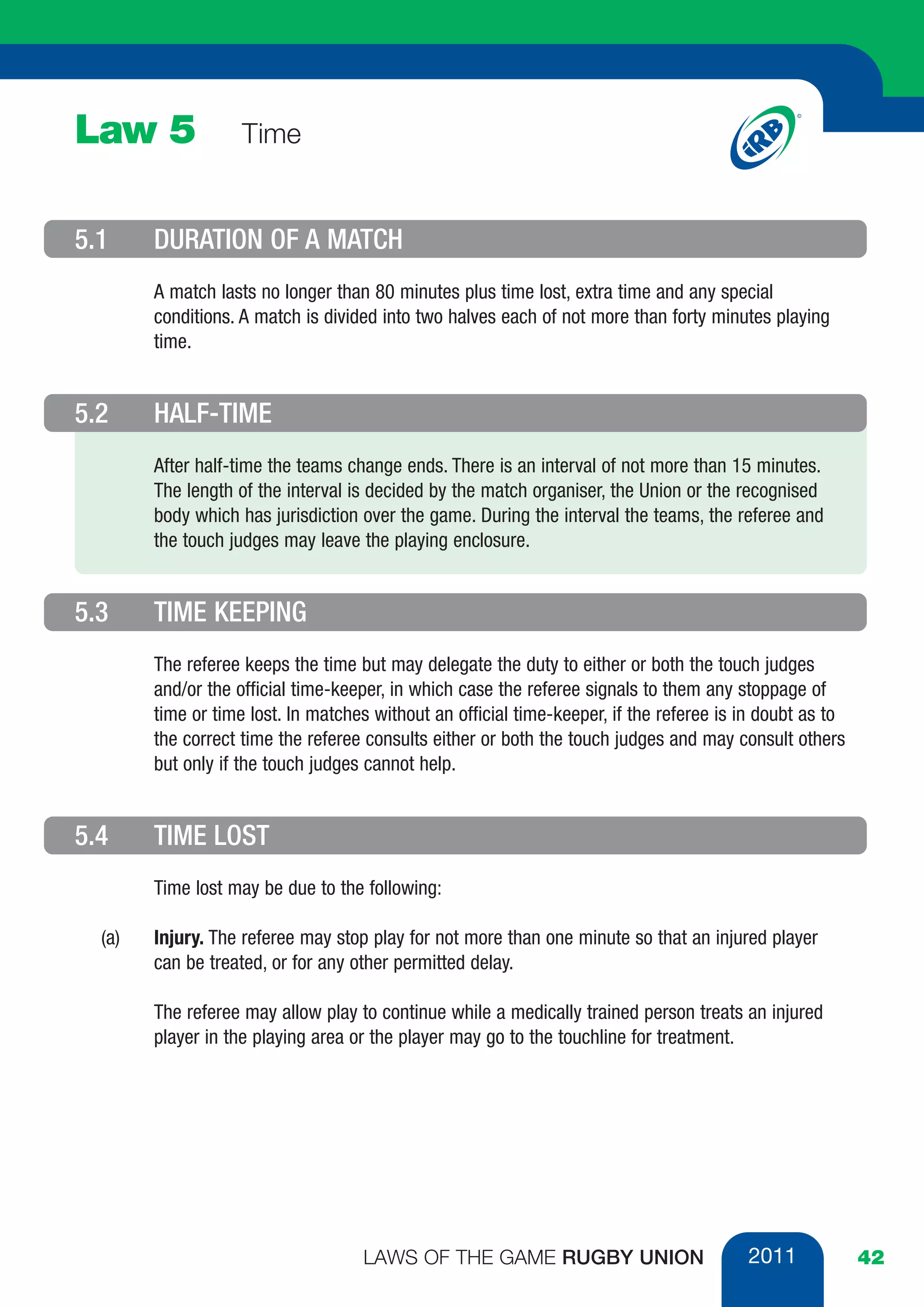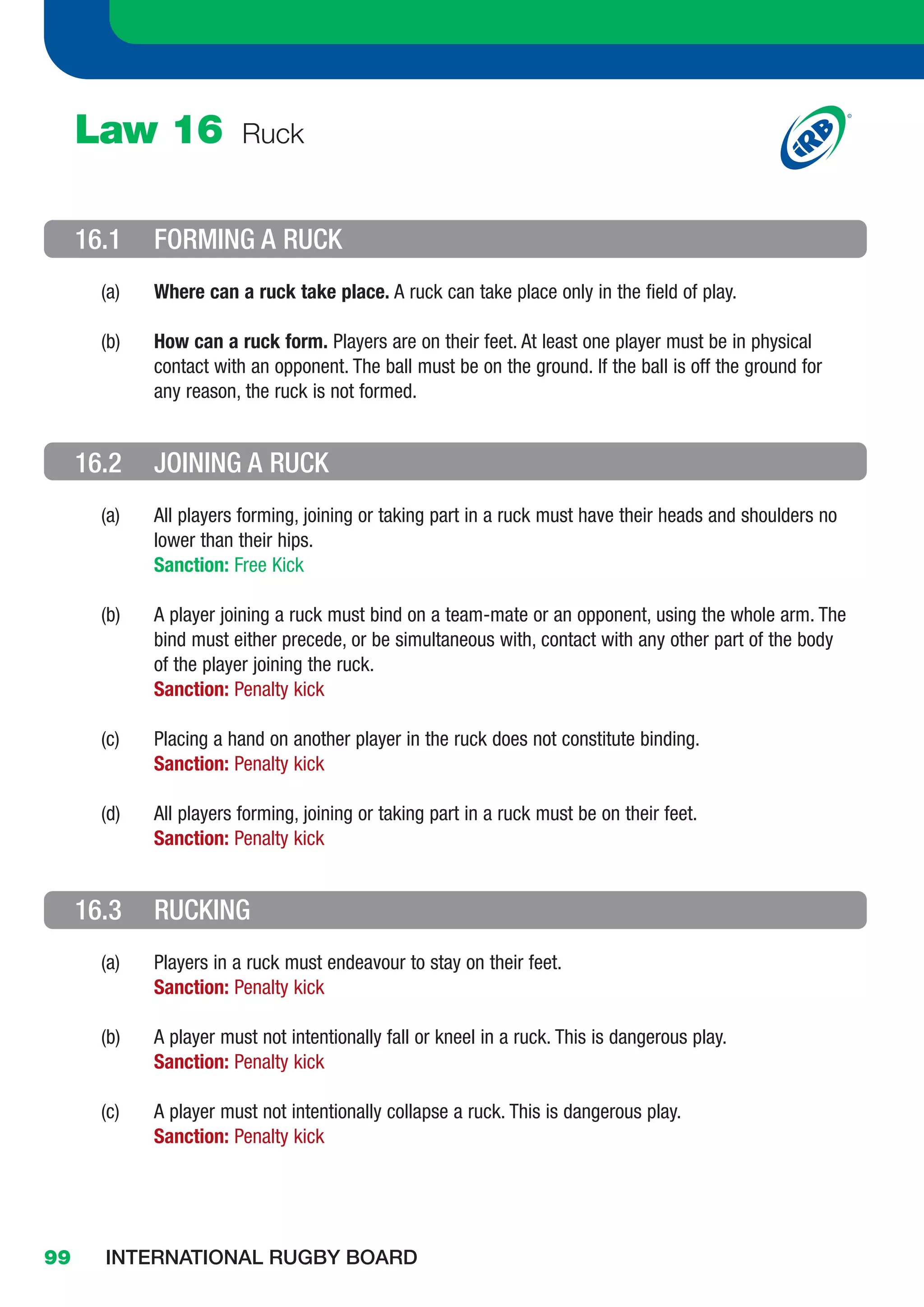The document summarizes the Laws of the Game for Rugby Union. It begins with definitions and terms used in rugby union, followed by sections on the playing charter, laws before the match such as ground dimensions and player numbers, laws during the match such as scoring and foul play, laws for in-field play like rucks and mauls, restart laws like lineouts and scrums, and laws for in-goal areas. It provides the comprehensive rules for playing rugby union organized into 22 laws.



































































































































































































